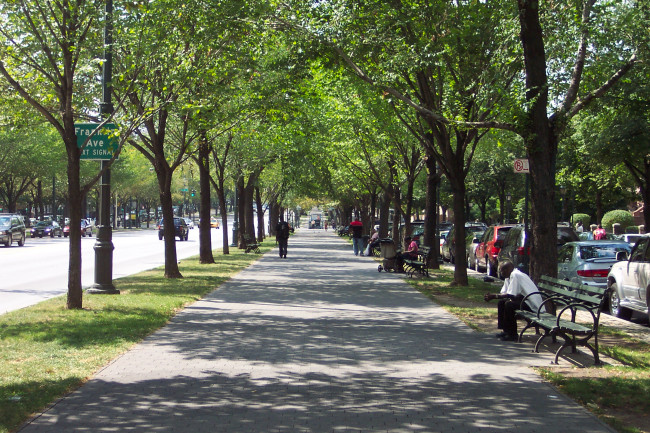A tale of two neighborhoods in Inwood
An Inwood resident generated some buzz recently when she wrote a personal essay for the New York Daily News about her struggles with noise in the uptown neighborhood. Her home near West Dyckman, the author explains, is in proximity to almost a dozen bars and restaurants, leading to what she describes as constant nightlife noise. As she points out, Inwood has become the source of the city's highest number of noise complaints to 311, and that the sound pollution has become a menace.
This is corroborated by an interactive map that was designed earlier this year, based on publicly available information about noise complaints made to the city. The map reveals Inwood to be one of the loudest neighborhoods in New York--at least as far as calls to 311 go.
To some others in the area, though, the issue is not so straightforward, and the author of the Daily News piece has faced backlash. Led Black, who helms the blog Uptown Collective, for instance, deemed the piece "borderline racist," interpreting the author's problems with noise as a coded way of objecting to her neighbors of color having a good time. As he explains, in Inwood, "Broadway is the faultline between two worlds."
To the east, he writes, the neighborhood is primarily poor and Latino, while to the west, more locals are wealthy and white. Those same low-income residents, though, "kept the neighborhood intact through the worst ravages of Reaganomics and the Crack Era," but there are newcomers to Inwood—he counts the author of the Daily News piece as one—who don't like seeing those residents "enjoying themselves in the businesses that they created and helped to sustain."
When reached for comment, Black, who was born and raised in Washington Heights, said that Broadway has always been a dividing line, but recently, tensions have escalated. He cited neighborhood Facebook pages on which residents have posted "ugly, ridiculous things. You get the feeling that [newcomers] don't care about the neighborhood, and they don't want people from the east side coming over to the west." They try to couch it as a noise issue, he says, "but it's more than that."
When he was growing up, Black recalls, Dyckman Street—the area the Daily News writer complained about—was a backwater. "But then, starting in the early 2000s, the sons and daughters of bodega and salon owners started opening businesses there and brought it back," he says, which revitalized the area in the aftermath of the crack epidemic. "Now the area generates lots of foot traffic, and some people on the west side don't want that."
He clarifies that the issue isn't as much about race as it is about attitude and tolerance. "The area has always had white people who embraced the culture of the neighborhood," he says.
According to DNAInfo, Inwood is indeed a neighborhood sharply divided along racial and socioeconomic lines. West of Broadway, 77 percent of households have salaries of over $100,000, while to the east, that same percentage earns less than $20,000. Racial divisions are similarly stark, with 90 percent of Inwood's white residents living to the west. Housing stock in the east is primarily rentals, while the west includes a significant amount of co-ops for sale, making it easier for wealthier residents to buy and gain long-term footholds in the area. And residents who are primarily Spanish speakers—and make up 40 percent of homes throughout the neighborhood—report feeling disenfranchised by community board meetings conducted entirely in English.
It's not surprising that things are tense, given that Inwood is one of the city's rapidly gentrifying neighborhoods, according to a report from the Furman Center for Real Estate and Urban Policy. The Furman Center found that rents in Inwood rose 29.3 percent from 2000 to 2014; this change means a higher rent burden for low- and moderate-income families, as well as fewer available affordable rentals. The amount of severely rent-burdened households in 2000, for instance, was 25.7 percent, but by 2014 it had jumped to 31.9 percent.
Sales prices, too, reveal a quicky changing neighborhood: In 2014, the median cost of a condo in Inwood was $434,539; in 2015, it was $515,000, placing Inwood among the five areas of NYC with the highest appreciation in sales prices.
Longtime residents are pushing back. Last week, as Patch reports, locals turned up at a community board meeting to voice their objections to a rezoning proposal for the neighborhood from the NYC Economic Development Corporation. EDC reps said the project's goal was to provide more affordable housing, but locals were dubious, expressing fears that the plan would in fact only hasten Inwood's gentrification.
For his part, Black says he'll continue to speak out against bigoted attitudes. "I may not be able to do anything about racism on a large scale, but I'm not going let it happen in my neighborhood," he says. "As a Latino, I'm tired of being made to feel like I don't belong."
You Might Also Like
































